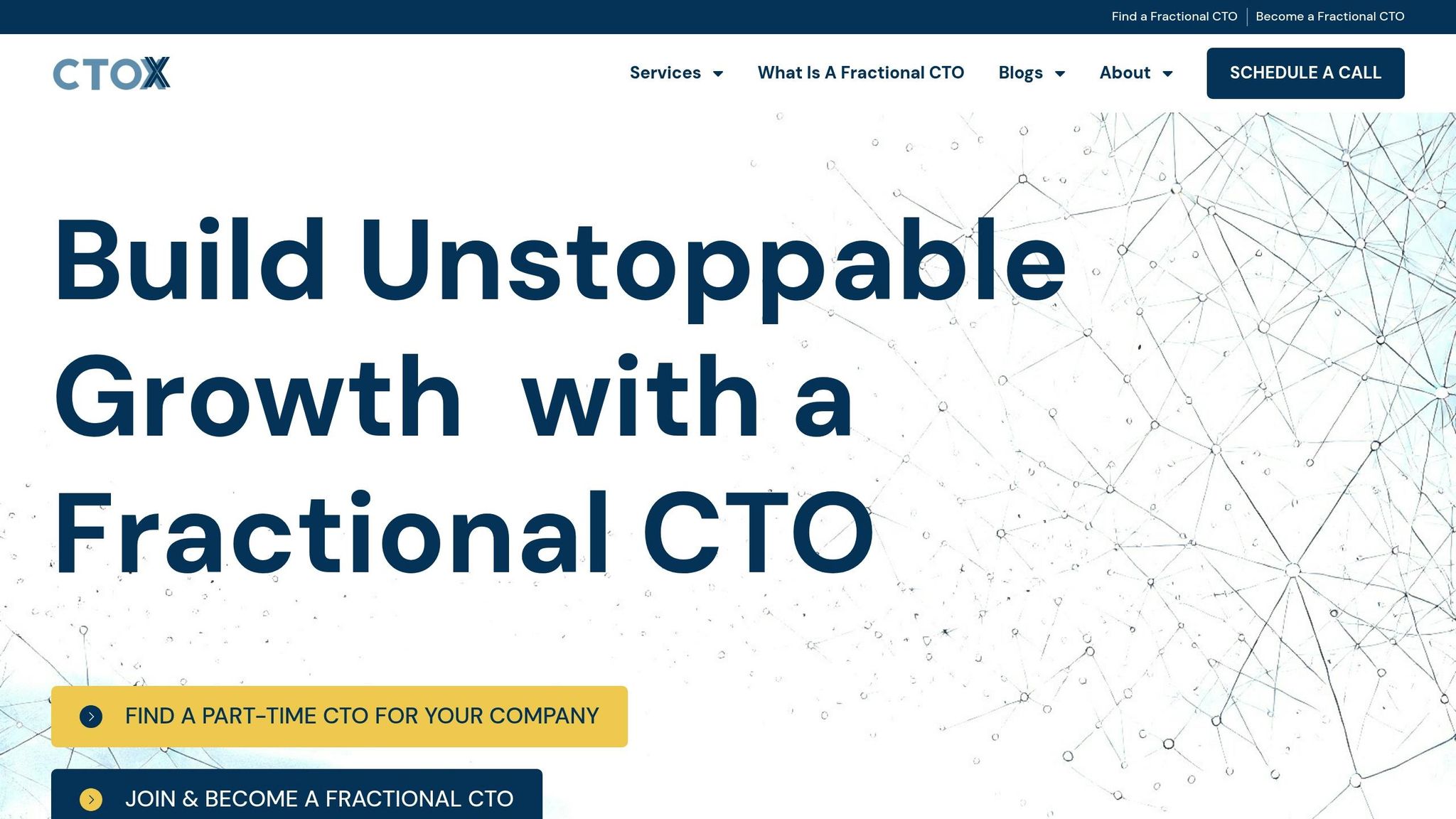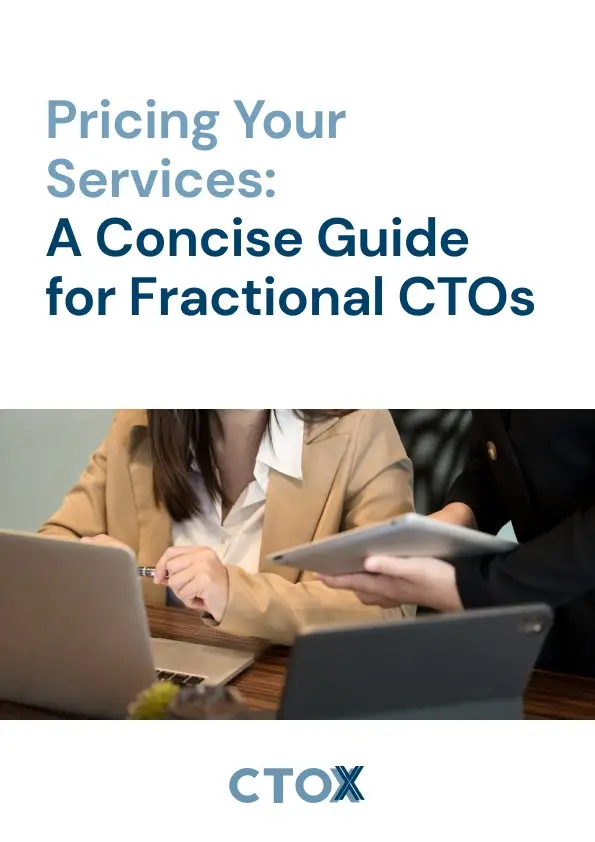Want to cut IT procurement costs while improving vendor selection? Competitive bidding is your answer. By encouraging vendors to compete, organizations can save money, enhance the quality of service, and align technology investments with business goals. Here’s what you need to know:
- Key Benefits:
- Save money upfront and reduce long-term costs (e.g., hiring a Fractional CTO can save over $200,000 annually).
- Ensure fair vendor evaluation using clear criteria like technical expertise, cost structure, and timelines.
- Avoid common pitfalls like unclear requirements or project scope creep.
- How It Works:
- Define your requirements (technical needs, budget, timeline).
- Write a detailed Request for Proposal (RFP) with clear evaluation criteria.
- Evaluate bids using a structured scoring system.
- Pro Tip: A Fractional CTO ($3,000–$15,000/month) can streamline vendor selection, prevent scope creep, and ensure IT investments align with your business priorities.
Table: Key Bid Evaluation Criteria
| Criteria | Weight | Description |
|---|---|---|
| Technical Expertise | 30% | Vendor’s ability to meet technical requirements. |
| Cost Structure | 25% | Transparency and total cost of ownership. |
| Implementation Timeline | 20% | Realistic schedules and milestone planning. |
| Support Services | 15% | Post-implementation support and maintenance plans. |
| Company Stability | 10% | Financial health and market presence. |
Competitive Procurement: How to Run a Tender Process
Competitive Bidding Steps
Step-by-Step Bidding Guide
Here’s how to navigate IT procurement bidding effectively:
- Requirements Definition
Clearly outline your technical needs, budget constraints, and timelines. Document essential details like technology specifications, performance benchmarks, and integration requirements. - RFP Development
Create a Request for Proposal (RFP) that includes the following key elements:- Technical specifications
- Project scope
- Evaluation criteria
- Implementation timeline
- Budget guidelines
- Compliance requirements
- Vendor Identification
Find qualified vendors by assessing their track records, financial stability, and technical capabilities.
These steps help set the stage for an unbiased evaluation process and selecting the best-value vendor.
Bid Assessment Criteria
Once the bidding process is structured, the next step is to evaluate proposals using clear, measurable criteria.
| Criteria | Weight | Description |
|---|---|---|
| Technical Expertise | 30% | Assesses the vendor’s ability to deliver the required technology. |
| Cost Structure | 25% | Evaluates total cost, including transparency in pricing. |
| Implementation Timeline | 20% | Focuses on realistic schedules and milestone planning. |
| Support Services | 15% | Reviews post-implementation support and maintenance plans. |
| Company Stability | 10% | Considers financial health and market presence. |
Open Process Requirements
To ensure the bidding process is fair and transparent, follow these guidelines:
- Documentation Standards
Keep a record of all communications and decisions. Securely store these documents to maintain accountability and allow for audits. - Equal Access
Provide every vendor with the same information and opportunities to ask questions.- Use a centralized platform to publish all Q&A for consistent access.
- Set clear deadlines and submission requirements.
- Evaluation Transparency
Use a structured framework for evaluating bids, which includes:- A clear scoring system
- Defined decision-making processes
- A timeline for selecting vendors
- An appeals process for any disputes
Cost Reduction Methods
How Vendor Competition Helps
When vendors compete, they tend to offer better pricing and terms. This approach makes IT procurement more efficient, allowing organizations to choose vendors that balance cost and quality effectively. In the long run, this strategy helps keep expenses under control.
Managing Costs Over Time
Competitive bidding doesn’t just save money upfront – it also lowers the total cost of ownership (TCO). This includes better terms for implementation, ongoing support, and updates. Hiring a Fractional CTO can further streamline vendor selection and technology planning. For $3,000–$15,000 per month, a Fractional CTO provides expert-level guidance and oversight without the cost of a full-time hire.
sbb-itb-4abdf47
Common Problems and Solutions
Main Bidding Obstacles
Bidding in IT procurement often comes with challenges that can derail cost efficiency and project success. One major issue is unclear requirements, which can lead to expensive revisions and delays. Another common problem is receiving too few vendor proposals. When the options are limited, it’s tough to make informed decisions or secure competitive pricing. This often happens when RFPs lack clarity or fail to attract qualified vendors. Then there’s project scope creep – when initial requirements grow as stakeholders add new features or changes. This makes it harder for vendors to provide accurate cost estimates, increasing the risk of budget overruns and delayed timelines. Addressing these issues is key to achieving better outcomes.
Problem-Solving Approaches
To overcome these challenges, organizations need a clear and strategic approach. Start by focusing on pre-bid planning. Analyze project requirements thoroughly and document clear details about scope, deliverables, and success criteria. Well-crafted RFPs are equally critical – they should include specific technical requirements, clear evaluation criteria, realistic timelines, and defined scope boundaries.
To avoid scope creep, hold regular progress meetings and maintain open communication with stakeholders. Bringing in a Fractional CTO can also be a game-changer. These experts can audit systems, create clear specifications, and objectively evaluate vendor proposals. They can also help identify underperforming vendors and introduce KPI scorecards for better performance tracking.
Finally, establish a system of accountability with regular review meetings focused on results. This proactive approach helps address issues before they escalate, keeping projects on track and within budget.
Effective Bidding Guidelines
Pre-Bid Planning
Start by conducting a technology audit to identify any gaps in your current setup and outline what you’ll need moving forward. Enlisting a Fractional CTO can be a smart move – they can evaluate your systems and provide a strategic plan that focuses on both immediate challenges and future growth needs.
When planning, focus on these key areas:
- Technical requirements and benchmarks
- Budget limits
- Timeline for the process
- Strategies to manage risks
Once you’ve nailed down your requirements, the next step is to write an RFP that encourages targeted and creative proposals.
Writing Clear RFPs
The quality of your RFP plays a huge role in the kind of responses you’ll get. A clear and detailed RFP ensures vendors understand your needs while giving them room to offer creative solutions.
Make sure to include:
Technical Requirements
- Current system architecture
- Integration needs
- Performance goals
- Security protocols
- Scalability expectations
Project Details
- Key timeline milestones
- Budget limitations
- Reporting guidelines
- Success metrics
When the proposals start rolling in, a structured review process will help you compare them effectively.
Results Review
Use a standardized scoring system to evaluate bids based on their technical quality, cost, implementation plan, and the vendor’s experience. A Fractional CTO can offer valuable insights into whether the proposed solutions are technically sound and provide long-term benefits.
| Evaluation Criteria | Weight | Description |
|---|---|---|
| Technical Capability | 35% | How well the proposed solution meets technical needs |
| Cost Structure | 30% | Total cost of ownership, including hidden costs |
| Implementation Plan | 20% | Feasibility of the timeline and resource allocation |
| Vendor Experience | 15% | Track record and expertise in similar projects |
Conclusion
Key Benefits
Competitive bidding in IT procurement can lead to major cost savings when done right. Encouraging competition among vendors not only improves cost efficiency but also pushes vendors to bring fresh ideas to the table. This process helps businesses choose the best solutions while reducing risks.
How CTOx Supports Your IT Goals
To maximize these benefits, expert guidance can make a big difference. CTOx connects you to vetted fractional CTO services designed for C-suite executives. They assess your technology setup, identify key priorities, and cut ties with inefficient vendors to ensure your IT spending aligns with your business goals.
Fractional CTO services are available for $3,000 to $15,000 per month and cater to businesses earning over $2 million annually. This focused approach helps ensure your technology investments deliver lasting results.








